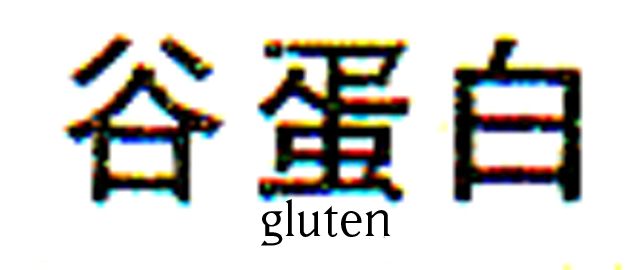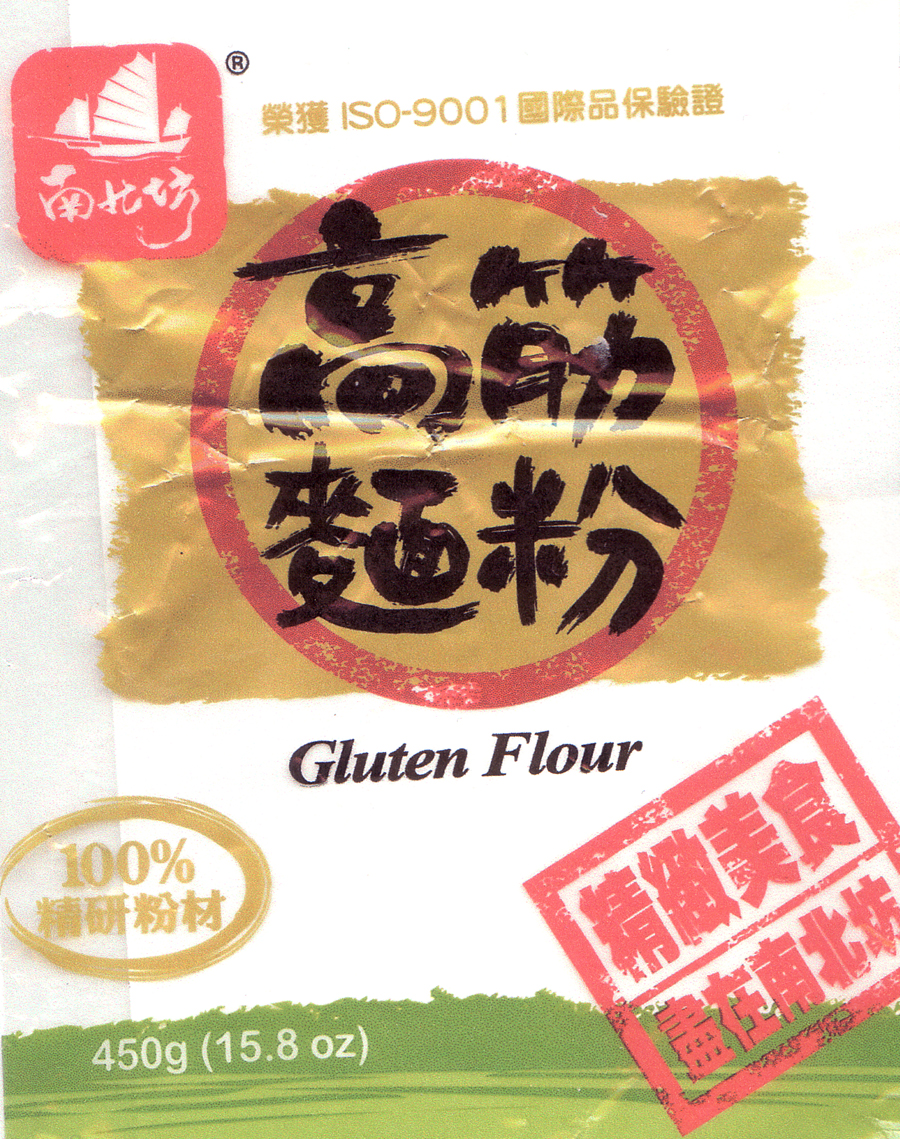
| What is Flavor and Fortune? |
| How do I subscribe? |
| How do I get past issues? |
| How do I advertise? |
| How do I contact the editor? |
Read 12875682 times
Connect me to:
| Home |
| Articles |
| Book reviews |
| Letters to the Editor |
| Newmans News and Notes |
| Recipes |
| Restaurant reviews |
| Article Index (all years, slow) |
| List of Article Years |
| Article Index (2025) |
| Article Index (last 2 years) |
| Things others say |
| Related Links |
| Log In... |
| Authors |
| Categories & Topics |
Gluten
| by Jacqueline M. Newman |
Vegetables and Vegetarian Foods
Winter Volume: 2007 Issue: 14(4) page(s): 29, 30, and 31
 A chameleon of a food, one most often made to look and taste like one or another animal food, gluten is certainly popular in China. That is where it was first developed, and where its use by vegetarians and non-vegetarians is still most popular. All Asian cultures, most particularly their Buddhists and their macrobiotic adherents, eat lots of gluten. The Japanese call it seitan, the Chinese have a variety of names, many changing over the centuries.
A chameleon of a food, one most often made to look and taste like one or another animal food, gluten is certainly popular in China. That is where it was first developed, and where its use by vegetarians and non-vegetarians is still most popular. All Asian cultures, most particularly their Buddhists and their macrobiotic adherents, eat lots of gluten. The Japanese call it seitan, the Chinese have a variety of names, many changing over the centuries.
Technically, gluten is the crushed endosperm of a protein surrounded by a protein matrix. It is a polymer of two main proteins, glutenin and gliadin that, when mixed with water, becomes what we call 'gluten.' This protein mixture is a sticky mass which, with yeast and sugars, breaks down and yields alcohol and carbon dioxide. That is why there are bubbles that help bread to rise and give it its delicate taste.
Believed known as early as the Han dynasty (206 BCE - 220 CE), it is better described later in the Qinmin Yaoshu (544 CE) when it was called pot ho. It was discussed as a wheat flour shaped like a thumb, cut in two and soaked in water, its pieces rubbed against the side of the pan. Later, it was called fu, a term also used for bran. One Taoist monk said it had the cleanest taste, cool and sweet, and when fried, its characteristics changed to heating.
During the Yuan dynasty (1280 - 1368 CE), in the Qichia Piyunggluten this food was also called mien chin; to some, it still is. In those days, it was made into mock meats and other animal protein foods including venison, barbecued meat, even meat jerky. In the Shihhsien Hungmi, circa 1681 CE, it was also pickled, even deep fried.
 Gluten has many names. Fresh and cooked, it can be called na ma fu. Roasted, the Japanese name of ya ki fu has been used. Deep fried as bright hollow balls, it is called mian jin pau. In Shanghai, they bake gluten and that spongy material results in an item called kao fu. When fried, it becomes brown and puffy and is called you mian jin. Long thin rolls of gluten are known as su tang. They can be sliced, diced, stir-fried, even braised.
Gluten has many names. Fresh and cooked, it can be called na ma fu. Roasted, the Japanese name of ya ki fu has been used. Deep fried as bright hollow balls, it is called mian jin pau. In Shanghai, they bake gluten and that spongy material results in an item called kao fu. When fried, it becomes brown and puffy and is called you mian jin. Long thin rolls of gluten are known as su tang. They can be sliced, diced, stir-fried, even braised.
By itself, gluten has very little taste but it surely absorbs flavors from any companion foods. It has a long shelf life and can stay a month or two. It freezes well. And, it can be kept until other flavorful foods or sauces are available to cook with it.
Also called mian jin, gluten can be purchased fresh, in jars or cans, and preserved in other ways. One finds it preserved in an assortment of packaging, and/or mixed with rice or other starches. It can be found in blocks or strips, string-shaped, and in shapes that mimic animal foods. Imitation shrimp can be made from gluten, and as such they look and taste like real crustaceans. They not only look that way, or like beef, pork, chicken, fish, or scallops, they fool both eye and taste buds.
Gluten comes not only the above ways, but also as a flour. Any way one finds it, it has the eight essential amino acids to be a complete protein, but it is low in one of them, namely lysine. Many gluten products are made with some bean flour to increase its nutritional value reducing this shortfall.
 Not all mock meats or mock foods of the sea are made with gluten. Some are made with tofu, tofu and gluten, and one or both of these and some flour from one or more root vegetables such as the Chinese yam. Usually, mushrooms or mushroom flour, soy sauce, and various seasonings are added along with other flours or starches and the gluten and/or tofu.
Not all mock meats or mock foods of the sea are made with gluten. Some are made with tofu, tofu and gluten, and one or both of these and some flour from one or more root vegetables such as the Chinese yam. Usually, mushrooms or mushroom flour, soy sauce, and various seasonings are added along with other flours or starches and the gluten and/or tofu.
| Gluten and Bean Curd Soup |
|---|
2 Tablespoons baking soda 3 bean curd sheets (about three ounces) 2 Tablespoons dried bamboo shoots, soaked 3 dried Chinese black mushrooms, soaked until soft, and minced 2 Tablespoons minced Smithfield ham 2 scallions, minced 2 slices fresh ginger, peeled and minced 3 Tablespoons pork, minced 4 gluten balls, minced 2 quarts vegetarian stock 1 teaspoon salt Preparation: 1. Add two cups water to the baking soda. Soak the bean curd sheets in this for five minutes. Then rinse and drain them. Discard the water. 2. Mix bamboo shoots, black mushrooms, ham, scallions, and ginger. Spread one-third of this on one bean curd sheet, and top with the minced wheat gluten. Spread one-third of the ground meat on this and roll into a long strip. Repeat with the other two sheets. 3. Steam these three rolls for twenty minutes, remove and slice on an angle. 4. In a large pot, heat stock and season it with the salt. Put three to five stuffed bean curd sheet slices in each individual bowl. Pour soup over them, and serve. Note: Another way is not to mince the gluten balls, but to mince the bean curd sheets. Stuff each gluten ball and steam for twenty minutes. Cut each in half, put two halves in an individual soup bowl, pour soup over them, and serve. No nutrient analysis because the program we use has none for dried bamboo shoots. |
| Stewed Gluten, with Vegetables II |
|---|
5 squares of wheat gluten, torn into small pieces (about five ounces) 3 Tablespoons vegetable oil 5 Chinese black mushrooms, soaked and coarsely minced 1/2 cup canned bamboo shoots, coarsely minced or sliced 1 Tablespoon soaked and minced cloud ear fungus 25 pieces dried lily buds, soaked, then each one knotted 1/2 cup fresh soy beans, blanched for five minutes 1 scallion, minced coarsely 2 slices fresh ginger, minced 3 Tablespoons dark soy sauce 1 Tablespoon sugar 1 teaspoon sesame oil Preparation: 1. Mix gluten and the oil, and fry until gluten is browned, then drain. 2. Reheat the oil and stir-fry the mushrooms, bamboo shoots, cloud ear fungus, knotted lily buds, soy beans, scallion, and ginger for two minutes, then add soy sauce, sugar, and sesame oil and stir-fry for five to eight minutes more. Serve warm or at room temperature. No nutrient analysis because the program we use has none for dried lily buds. |
| Fried Gluten II |
|---|
1/2 pound gluten, torn in small pieces 3 Tablespoons vegetable oil 1 Tablespoon dark soy sauce 1 Tablespoon sugar 1 teaspoon five-spice powder 2 Tablespoons rice wine 1 Tablespoon sweet bean paste 1 slice fresh ginger, minced 1 Tablespoon sesame oil Preparation: 1. Boil gluten in two quarts of water for five minutes, then drain and discard the water. 2. Heat oil and fry the gluten for two minutes then add all the rest of the ingredients. Simmer them for fifteen minutes or until all the liquid evaporates. Serve hot or warm. Approximate nutrient analysis when serving six persons. Each serving has 245 calories, 9 g carbohydrate, 29 g protein, 252 mg sodium, 10 g total fat, 1g saturated fat, and no cholesterol. |
| Braised Gluten II |
|---|
8 cups flour 1 teaspoon salt 2 cups vegetable oil 1 teaspoon sugar 2 teaspoons thin soy sauce 3 Tablespoons vegetable or mushroom stock 1/2 teaspoon sesame oil Preparation: 1. Sift flour, add salt and two cups of warm water. Knead until smooth, rinse this dough under cold water and remove the starch. Repeat until water is no longer cloudy. Then knead and stretch, and repeat five times or more until all starch is removed and only the protein remains. Tear gluten into small pieces. 2. Heat oil and fry gluten pieces for four minutes, or until golden. Then remove and drain them. 3. Reheat oil, add gluten sugar, soy sauce, and the gluten. Then add stock and simmer until almost all liquid has evaporated. 4. Sprinkle with the sesame oil, and serve hot, warm, or cold. |

Copyright © 1994-2025 by ISACC, all rights reserved
Address
3 Jefferson Ferry Drive
S. Setauket NY 11720